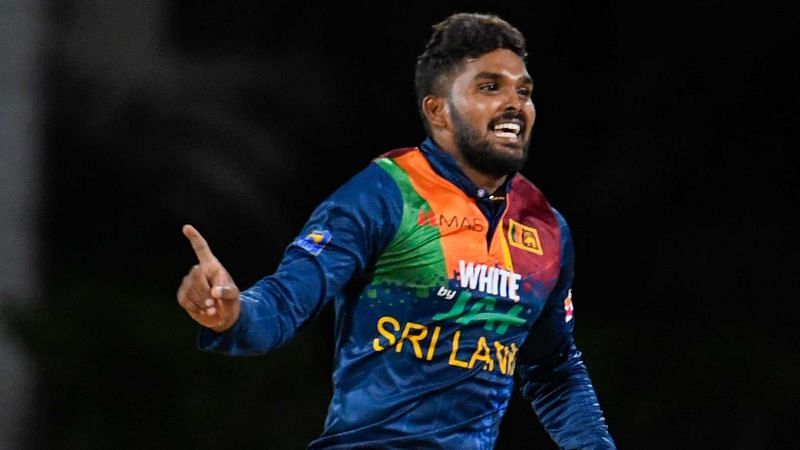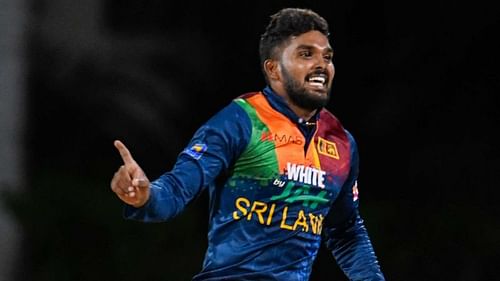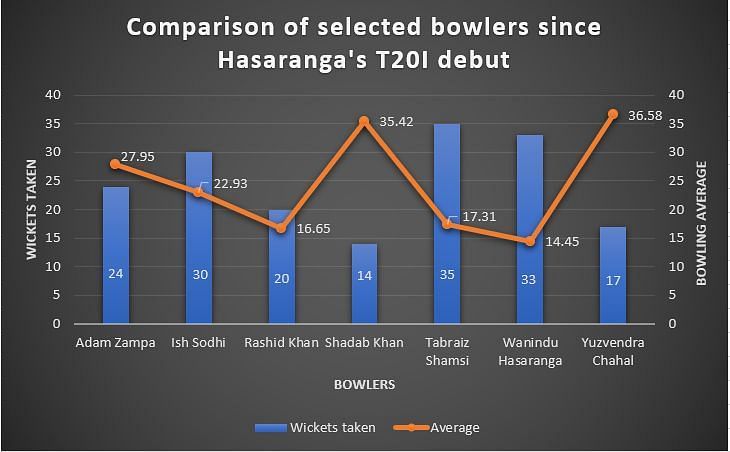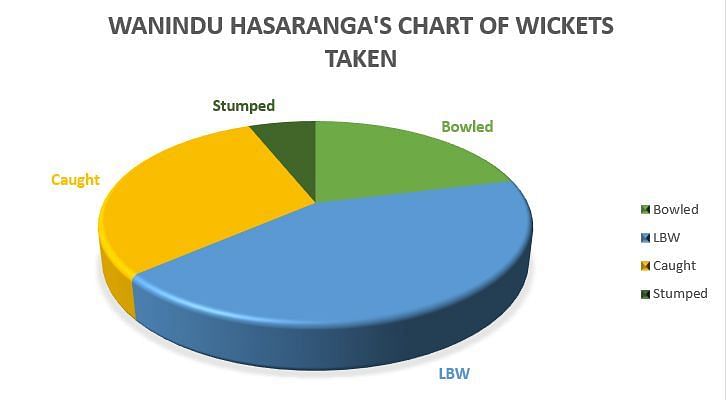
We need to start talking about Wanindu Hasaranga

A few weeks ago, when Wanindu Hasaranga was single-handedly toiling in England to ensure success for Sri Lanka, not many would’ve felt that he would undergo a transformation that pits him as one of the Islanders’ biggest match-winners.
Though he was still touted as one of their brightest sparks, there remained skepticism around Hasaranga’s ability to directly impact games – an impact that only a few spinners across the globe can profess to make.
Against India though, especially in the T20I series, all that chatter was put to rest, with Hasaranga proving that he has all the ingredients to become the premier leg-spinner in T20 cricket. Importantly, his performances have also come at a time when the Islanders were seemingly on the brink of another cricketing meltdown, hinting that unflappable temperament is one of his key virtues.
Over the past few months, Sri Lanka have scaled their greatest cricketing depths and thankfully for them and the rest of the cricketing universe, they have lived to tell the tale.
So much so that their struggles finally bore fruit in the recently concluded series against India – a rubber where the visitors were severely hampered by COVID-19 but still had players capable of playing international cricket regularly.
Unsurprisingly, Hasaranga played a massive role, accounting for 7 batters across the three-game series. Apart from the wickets though, there have also been several elements that shed light on why Hasaranga, despite his relatively inexperienced career, certainly warrants a mention when discussing the best spinners in the shortest version.
Over the course of the T20I series against India, the leg-spinner showcased the different strings to his bow. At times, he was content to bide his time and rarely offered up a loose delivery, whereas on other occasions, he went searching for wickets and found them.
In the 3rd game, everything clicked brilliantly and it adorned what had already been a magnificent series for Hasaranga. Not only did he bamboozle the batters in flight, he was also smart enough to keep changing the lines, lines and the trajectory, with the last in particular helping him outwit Sanju Samson.
Also Read: Sanju Samson's glorious inconsistencies - Indian cricket's biggest paradox
Since that remarkable showing, there have been murmurs that Hasaranga has been courted by at least four different IPL franchises, considering the exceptional form he would bring to the table.
Though there might be an inclination to term it as a knee-jerk reaction, especially with that display coming against India – the largest fan base in the world, there is plenty of evidence that might suggest otherwise. In simpler terms, Hasaranga hasn’t just been good against India; he has been consistently doing so since his debut.
Wanindu Hasaranga has extraordinary numbers since his T20I debut
To place things into context, Hasaranga has played 22 T20Is so far and has bowled in 20 of them. In those innings, he has scalped 33 wickets, which roughly translates to more than 1.65 wickets per innings. He also boasts a miserly average of 14.45 and that, coupled with his economy rate of 6.56 and strike rate of 13.20, is simply incredible.
Since Hasaranga’s debut on 1st September 2019, only a solitary wrist-spinner (among Test playing nations) has picked more wickets – Tabraiz Shamsi. The South African, though, has bowled in 5 more innings, while his average and strike hovers around 17.31 and 16, respectively.
As for the other leading wrist-spinners in the world, namely the likes of Adam Zampa, Ish Sodhi, Shadab Khan and Yuzvendra Chahal, the discrepancy is even more startling.
Since September 2019, Zampa has bowled in a T20I 24 times and has only bagged 24 wickets at an average of 27.95 and a strike rate of 21.2. Ish Sodhi, meanwhile, has dismissed 30 batters in 23 innings, boasting a relatively decent average of 22.93 and a strike rate of 16.
Chahal and Shadab, on the other hand, have fallen off a cliff and have pretty ordinary numbers since the start of September 2019. Chahal has 17 wickets from 18 innings, whereas Shadab has notched up 14 scalps in 16 essays. Their averages during this period are 36.58 and 35.42, respectively. The strike rates are pretty woeful too, with Shadab’s strike rate of 24.4 marginally better than Chahal’s tally of 24.7.

Thus, the statistics hint that Hasaranga is currently head and shoulders above the rest of the pack.
Apart from raw numbers, there are numerous facets that make Hasaranga a tough nut to crack. Though there will come a time when opposition batters get more accustomed to his style of bowling, some of the traits he possesses have the potential to serve him well throughout his career.
Over the years, a lot of leg-spinners have relied on a high-arm action and one that generates over-spin, which subsequently leads to extra bounce. Hasaranga, though, bends his front knee just a shade at the point of delivery, meaning that he bowls from a lower point than what other spinners of his height would ideally do.
The above allows him to skid the ball off the surface, while not allowing the batters to get underneath the ball and attempt lofted shots. Consequently, batters are forced to deploy the reverse sweep and the sweep, which considering his accuracy and lack of bounce, open the door for being dismissed ‘Bowled’ or ‘LBW’.

Of the 33 wickets that he has taken in T20Is, 21 (7 bowled and 14 LBW) have come via that avenue – something that makes him extremely difficult to tackle in subcontinental conditions.
Furthermore, like all top-drawer leg-spinners, Hasaranga boasts an exceptionally disguised googly. Importantly, he doesn’t allow the batter to read the googly off the pitch, due to his length. Ruturaj Gaikwad’s dismissal in the 3rd T20I being the perfect example of that propensity.
He also ensures that he doesn’t vary the line of the leg-spinner and the googly too much, meaning that the batter is left guessing, more often than not.
Most tellingly, Hasaranga seems to have the rare ability to assess when the batter is trying to increase the tempo. In such circumstances, he usually forces the batter to manufacture shots rather than allowing them to feast on comparatively loose deliveries.
Thus, there is enough to indicate that Hasaranga is arguably one of the best wrist-spinners in T20I cricket at the moment. And, even though his staunchest critics might say that his stature has grown due to his displays against India, the bare fact remains that he has been as good since his T20I bow.
As far as an IPL gig is concerned, it might still be too early to comment, for there are a lot of other elements involved as well. Not just will he have to be trusted by a franchise, he will also need to walk into the side as one of the four overseas players, which in the middle of a season is quite arduous.
Nevertheless, if credentials are the sole criterion, Hasaranga would immediately improve any IPL team he plays for. After all, that is what he has done for Sri Lankan cricket in such a short span and now, after months of hurt, he has also found a way to translate his personal positive performances into victories for his country.
Maybe, it is time we start talking about Wanindu Hasaranga a lot more!